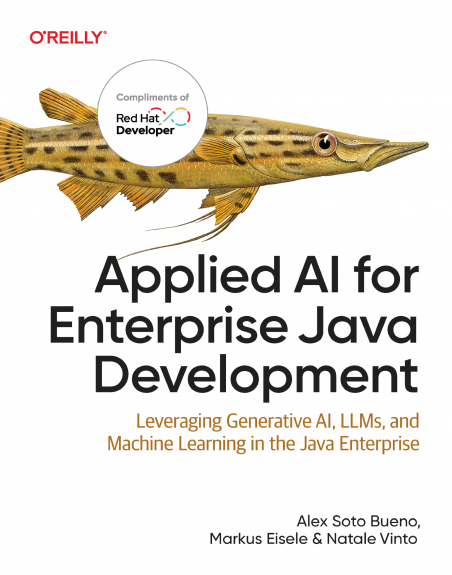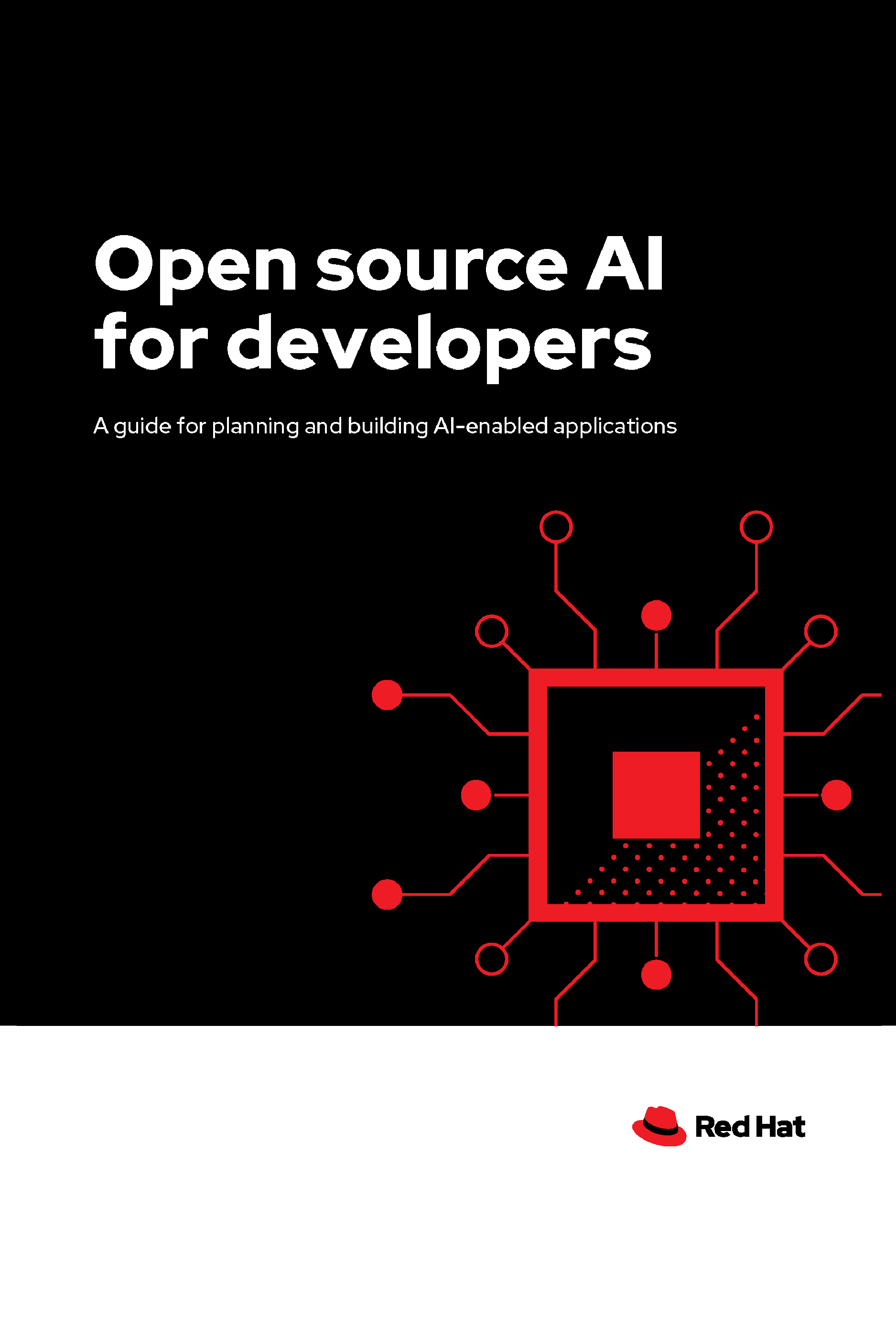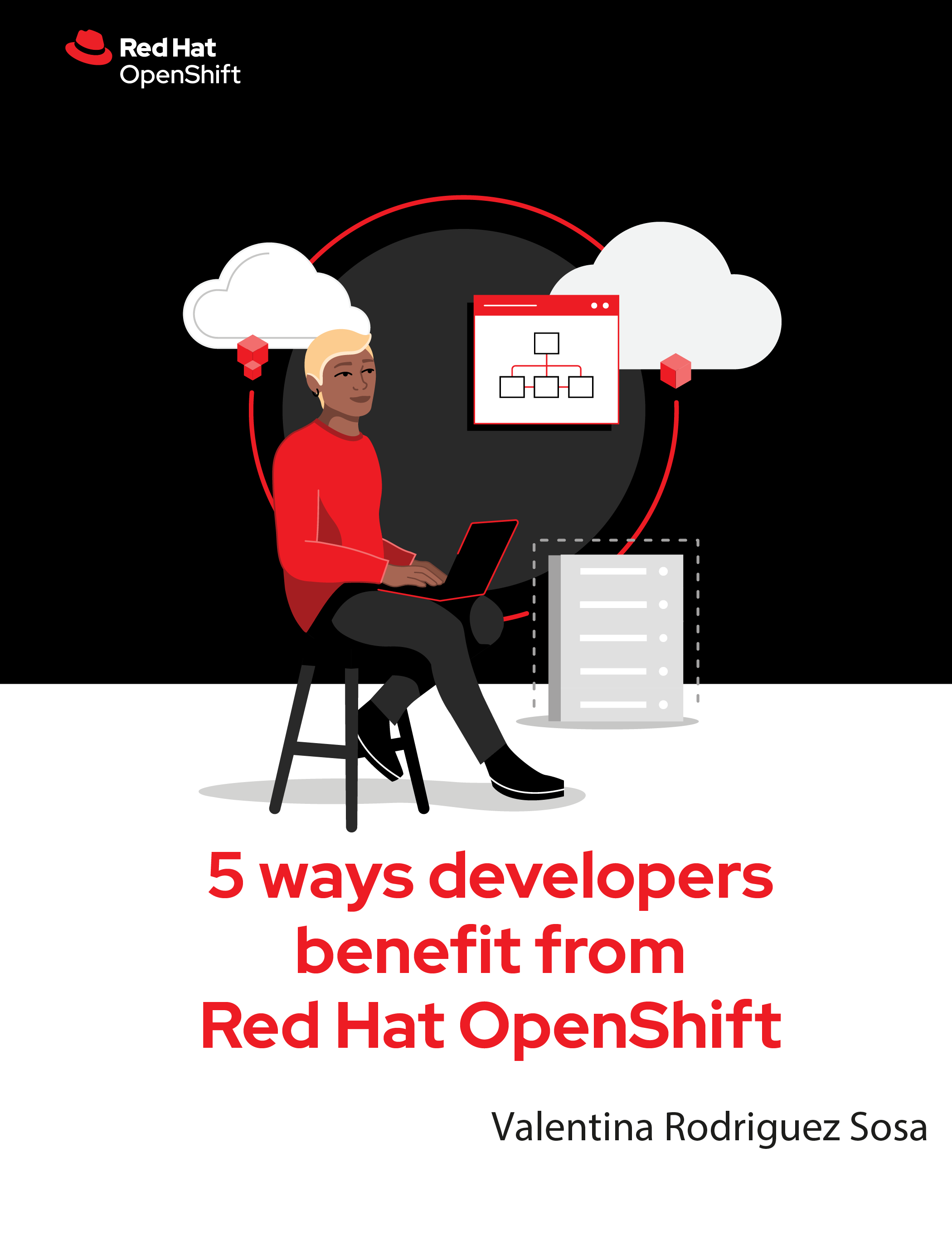

Applied AI for Enterprise Java Development
Overview
For Java enterprise developers and architects looking to expand their skill set into artificial intelligence and machine learning (AI/ML), getting started can feel intimidating, especially when faced with complex theory, data science, and unfamiliar programming languages.
Download Applied AI for Enterprise Java Development, a book about AI tailored specifically for Java developers. This practical guide shows you how to integrate generative AI, large language models, and machine learning into your existing Java enterprise ecosystem, using tools and frameworks you already know and love. By combining the reliability of Java’s enterprise framework with the power of AI, you’ll unlock new capabilities to elevate your development process and deliver innovative solutions.
- Craft actionable, AI-driven applications using Java’s rich ecosystem of open source frameworks
- Implement field-tested AI patterns tailored for prod-ready, enterprise-strength applications
- Access and integrate top-tier open source AI models with Java
- Navigate the Java framework landscape with AI-centric agility and confidence
Table of contents:
- Chapter 1: The Enterprise AI Conundrum
- Chapter 2: The New Types of Applications
- Chapter 3: Prompts for Developers: Why Prompts Matter in AI-Infused Applications
- Chapter 4: AI Architectures for Applications
- Chapter 5: Embedding Vectors, Vector Stores, and Running Models Locally
- Chapter 6: Inference API
- Chapter 7: Accessing the Inference Model with Java
- Chapter 8: LangChain4j
- Chapter 9: Vector Embeddings and Stores
- Chapter 10: LangGraph
- Chapter 11: Image Processing
- Chapter 12: Advanced Topics in AI Java Development
Excerpt
As a Java developer, you might be used to working with structured data, type-safe environments, and explicit control over program execution. LLMs operate in a completely different way. Instead of executing predefined instructions like a Java method, they generate responses probabilistically based on learned patterns. You can think of an LLM as a powerful autocomplete function on steroids—one that doesn’t just predict the next character but understands the broader context of entire conversations.
If you’ve ever worked with compilers, you know that source code is transformed into an intermediate representation before execution. Similarly, LLMs don’t directly process raw text; instead, they convert it into numerical representations that make computations efficient. You can compare this to Java bytecode—while human-readable Java code is structured and understandable, it’s the compiled bytecode that the JVM executes. In an LLM, tokenization plays a similar role: it translates human language into a numerical format that the model can work with.
Another useful comparison is the way Java Virtual Machines (JVMs) manage just-in-time (JIT) compilation. A JIT compiler dynamically optimizes code at runtime based on execution patterns. Similarly, LLMs dynamically adjust their text generation, predicting words based on probability distributions instead of following a hardcoded set of rules. This probabilistic nature allows them to be flexible and creative but also means they can sometimes produce unexpected or incomplete results. Now, let’s break down their components, starting with the key elements.


